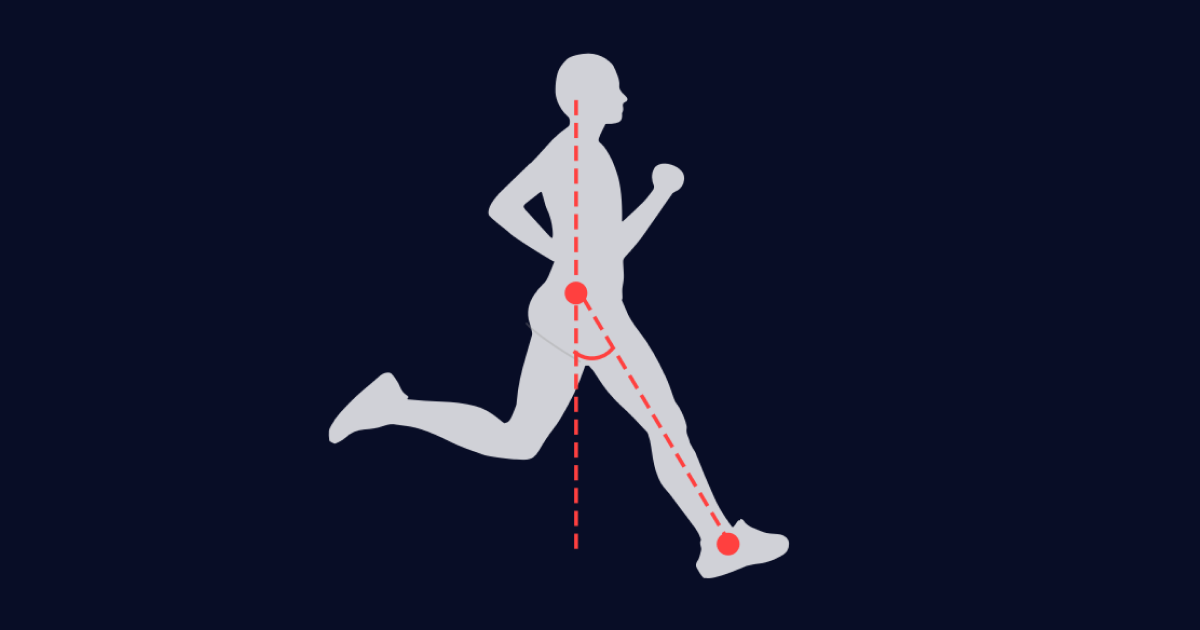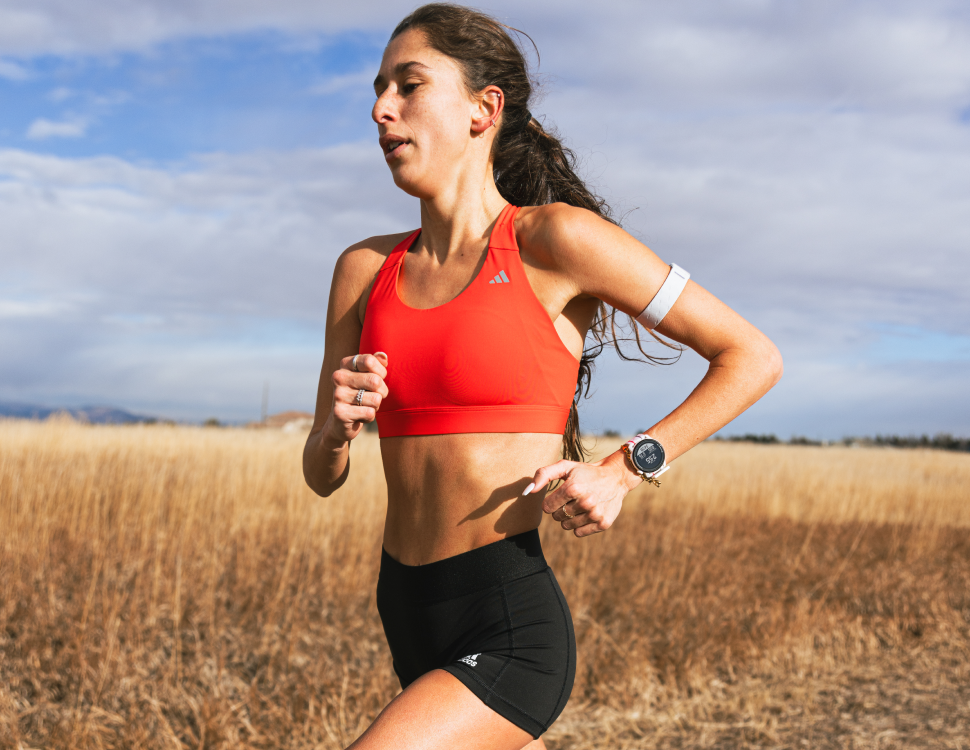Your overall running ability is mainly influenced by 3 components, also known as the 3 pillars of marathon performance. VO2max, Threshold, and Running Economy. With EvoLab, you are able to closely monitor the first two components, but very little information is provided in the running community regarding running economy.
COROS is happy to provide a comprehensive running form evaluation that you can complete on your own with guidance from your COROS watch. This will assess where your strengths and weaknesses are from a biomechanics standpoint.
How To Perform The Running Form Test?
This test only takes 10 minutes and requires you to wear your COROS watch paired with the POD 1/2 on your waist. Here are the quick steps to follow in order to complete your first running form test:
- Scroll down in your activity modes and click on Fitness Tests, then Running Form Test.
- Make sure you wear the POD on your waist.
- The test is divided into 2 sections: a 5-min warm-up and a 5-min at a faster pace (around threshold pace zone). The paces are based on your own race predictors.
- Head over to the activity in your COROS app for the full running form evaluation.
Can I do the test without a POD, or with the POD attached to the shoe? No. In order to receive full data analysis on your running form, it is required for the POD 1/2 to gather relevant data from the waist, such as your balance and stride height.
How To Interpret Your Results?

Overview of the Running Form Test in the COROS app.
Once the test is complete, an Assessment Details section will be available within the activity data to receive the complete evaluation. Your Running Form Score uses a weighted average of 3 dimensions of your running form, such as Skill, Strength, and Balance.
What does my Running Form Score tell me? This score is based on two factors: your biomechanical performance and your risk of injury. Strangely, biomechanical perfection for a runner often leads to an increase in injury risk. This is why we are taking both factors into the equation. In other words, the higher your score, the better AND safer your running economy is.
After you receive your Running Form Test, EvoLab will attribute you to one of two running types: Ground Runner or Aerial Runner. Here is what you need to know about them:
Ground Runner: See this type of runner as a wheel-like locomotion. This runner's center of mass remains relatively consistent and closer to the ground. They propel themselves forward with very little bouncing up. This type is often tied to mid- and rear-foot strike patterns.
- Advantage: Low muscle oxygen consumption (your legs are taking it easy in this form!)
- Disadvantage: Loss of mechanical energy (your legs cannot recycle energy as you run)
Aerial Runner: See this type of runner as a spring-type locomotion. This runner applies large forces onto the ground to propulse them up in the air. This type is often tied to forefoot strike patterns.
- Advantage: Low loss of mechanical energy (your legs recycle energy of your past stride and use it for the next one)
- Disadvantage: Strong muscle tendon requirements (this energy recycling happens in the tendons, which requires considerable strength and therefore prone to injury)
Which type is better? Multiple studies have shown no significant difference in running economy between ground and aerial. However, it has been shown that aerial runner tends to be more effective for marathon performance while ground runner tends to be more effective for slow, long-duration running with a decrease in injury risk.

Understanding the 3 Dimensions of Your Running Form Test
Your Running Form Score is divided into 3 dimensions that make up for your overall score. All biomechanics factors (except Balance) are separated into 5 grades (Elite, Great, Good, Average, and Qualified) that are defined based on runners in your area with similar a Running Fitness score.
Why does speed play an important role in your running form? The faster you run, the more efficient you become. The values obtained with your Running Form test would then change depending on the pace at which you have run. Therefore, it is important to compare those values with similar paces over time.
Dimension 1: Skill

Skill dimension from the Running Form Test.
Ground Time
- This factor reflects how much time (in ms) your foot is spending touching the ground at each stride. Ground Time is a great indicator of your lower body movement efficiency.
- The lower the value, the better you are at moving your legs around in a more efficient manner.
Strike Angle
- Strike Angle refers to the location of your foot compared to your center of mass when touching the ground.
- The lower your strike angle is, the closer your foot is to your body when landing.

Strike angle between center of mass and landing foot.
Stride Ratio
- Stride Ratio refers to your stride height divided by your stride length, in percentage. This value highlights how much vertical bouncing you do per distance covered on foot.
- The lower your Stride Ratio % is, the less energy you are using battling gravity when running.
Dimension 2: Strength

Strength dimension from the Running Form Test.
Leg Stiffness
- Although Leg Stiffness is defined in kN/m, it is a ratio between your Peak Ground Reaction Force and the amount of leg compression when landing. It is a great indicator of how strong and reactive your lower-body tendons are when running so they can absorb more energy and lower injury risk.
- The higher the Leg Stiffness, the stronger your tendons are and the more powerful your legs are.
Peak Ground Reaction Force
- During running, you are propelled forward by one foot at a time. This foot has to produce a lot of energy to get you up in the air and further away. Peak Ground Reaction Force shows this energy in absolute value for a single foot (in kN). It is a great indicator of overall lower-body strength.
- The higher your Peak Ground Reaction Force, the stronger your legs are.
Dimension 3: Balance

Balance dimension from the Running Form Test.
Balance
- Balance looks at the symmetry between your left and right foot by comparing single-leg ground contact time. Uneven terrain or injuries are common reasons why we may see a higher ratio of L/R Balance. It is a great indicator of lower-body health and can be used to monitor an injury.
- The lower the L/R Balance % is, the more symmetrical your running pattern is.
Evaluation Summary

Evaluation Summary from the Running Form Test.
The Running Form Test Assessment ends with an Evaluation Summary, highlighting your running form type, your strengths and weaknesses within the 3 dimensions, and your risk of injury.
We recommend contacting our COROS Coaches via coach@coros.com to help you interpret your results in a more individualized way and make sure your training is adapted to your own running form!





